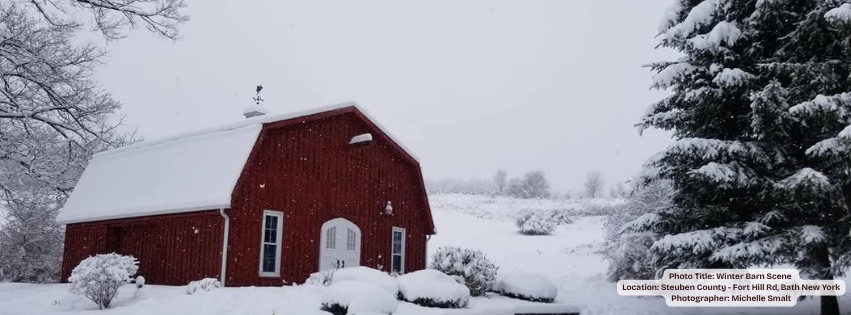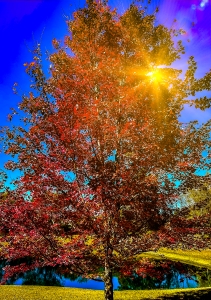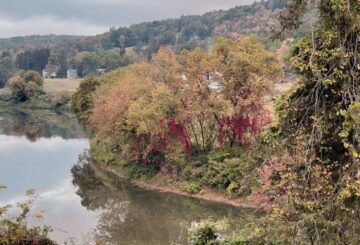“… a canvas, a pause that enables the next movement “
A COLUMN By, Johanna Elattar
September arrives with its subtle signals: the air sharpens, carrying the faint scent of damp earth and distant wood smoke; the sunlight shifts, softer, angled, almost conspiratorial. Trees begin the slow transformation, their leaves shading from green to amber, crimson, and gold. To the casual observer, the season might suggest decline—the shedding of life, a prelude to the starkness of winter. Yet, the season is far from an ending. It is a threshold, poised between what was and what might be.
Autumn carries a quiet energy that is often overlooked. The falling leaves are not merely remnants of summer; they are nature’s preparation for renewal. Each branch, gradually revealed as foliage falls, is both exposed and open, waiting for what is next. The bare forms of trees against a pale sky are not empty—they are ready. Ready to receive, to host new life, new possibilities, and new beginnings beneath their skeletal outlines.

The air in autumn holds a peculiar clarity. The heat of summer has dissipated, leaving behind a sharper awareness of one’s surroundings. Shadows lengthen with deliberate slowness, encouraging observation and reflection. This is a time when motion can be found in stillness, when energy accumulates quietly, unnoticed by the unobservant, and when the world seems prepared for creation. The season’s color palette—fiery reds, deep oranges, muted yellows—acts as both signal and reminder: transitions carry beauty, and endings often harbor beginnings.
Even the smallest details underscore this quiet transformation. The rustle of a leaf across a sidewalk, the glint of frost on early mornings, the deepening of nightfall—all speak of a world in preparation. There is a rhythm here, subtle yet inexorable. Life slows in the visible sense, yet activity pulses beneath the surface. Seeds take root in soil freshly exposed by fallen leaves; animals adjust to new patterns of light and temperature; ideas and routines begin to shift in response to the season’s cues. There is work happening quietly everywhere, and it is easily overlooked by those rushing past or staring only at what seems static.
Autumn’s light has its own character. Morning fogs drift lazily across fields, softening outlines, blending edges, and hiding the world in a gentle haze. Afternoon sun filters through thinning branches, casting long, lattice-like shadows, and giving ordinary streets, fences, and sidewalks a cinematic quality. Evening falls earlier, not with abruptness but with a gradual descent that invites awareness. This changing light draws attention to the textures that often go unnoticed: the crumbling bark of a tree, the subtle variations in the color of soil, the interplay of wind on a surface of rippling water.
Autumn is also a season of ritual. Harvests conclude, marking the fruits of labor and the necessity of preparation. Gardens that flourished all summer now yield seeds or are cleared, leaving the ground open to rest, to reset. Farmers and gardeners move with purpose, guided by the shifting hours of light and warmth, aware of both what has been accomplished and what remains to be tended in the months ahead. Communities themselves, quietly, follow similar rhythms: schools open, routines resume, and lives adjust to the lengthening nights. There is a structured energy in the pause that comes before the cold of winter sets in fully.
Autumn is a time of thresholds. Not merely the threshold between summer and winter, but a threshold in perception, where attention sharpens and possibilities can be imagined with clarity. It is a season that allows for observation, contemplation, and the recognition of patterns in change. What appears as an end is, in fact, a pause—a necessary interval that readies the world for what comes next. The apparent decay of leaves, the skeletal appearance of branches, the cool winds brushing against skin—each is a subtle call to notice, to consider, to prepare for the unseen growth waiting beneath.
The season illustrates a principle often overlooked: beginnings are not always heralded by spring, nor endings by winter. In autumn, evidence is in the trees, the air, the shifting light. The world prepares quietly, methodically, for what is to come. The falling of leaves, often perceived as loss, is the soil’s invitation to the future. The shortening days invite reflection, a slowing of pace, a readiness for renewal. In every transformation lies potential: the dead are rarely permanent, the static rarely immobile.
Autumn is neither loss nor conclusion. It is a threshold, a canvas, a pause that enables the next movement to emerge. Observed closely, it reveals that every ending is also a beginning, and every change carries within it the seed of possibility. The season’s magic is in its duality: the fading of life in plain sight and the quiet accumulation of unseen energy beneath. The world, in all its simplicity, is poised for the next chapter, and those attuned to the rhythms of this time are rewarded with clarity, beauty, and a subtle sense of possibility.
Autumn does not demand attention; it offers it. It does not insist on awareness; it rewards it. And in this quiet, deliberate season, perhaps the most profound observation is that preparation is itself an act of hope. The falling leaf, the early frost, the lengthening shadows—all bear witness to the ongoing cycle of endings and beginnings, of pause and potential. In autumn, the world whispers that nothing truly ends, and that every moment of stillness carries within it the promise of what comes next.
Johanna Elattar is a journalist and author whose work bridges personal narrative and investigative insight. Based in Hornell, NY, she writes for the Hornell Sun and Wellsville Sun, covering local stories, social justice, and national issues. Her reporting has been recognized internationally, her work is featured in the forthcoming 4th edition of Race & Racisms (Oxford University Press, 2026). Beyond journalism, Johanna is the author of the upcoming novella Hollow Echo and regularly explores complex topics with honesty, clarity, and depth, giving voice to overlooked communities and nuanced stories. You can reach her anytime, americangrrl70@gmail.com






